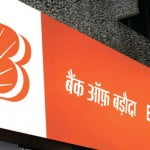
New Delhi: Listed companies issuing Indian Depository Receipt (IDR) will have to make disclosures about details of such shareholding within 15 days at the end of every quarter in a format specified, said SEBI.
The disclosures need to be made in a format specified by the markets regulator.
IDRs are instruments denominated in rupees which allow overseas companies to raise funds from the Indian market.
In a circular, SEBI said listed entities will have to file the IDR holding pattern with the stock exchanges on a quarterly basis within 15 days of end of the quarter in the format specified by it.
The listed entity that has issued IDRs will have to disclose about the number as well as percentage of IDRs held by promoter, non-promoters, institutional investors (mutual funds, banks, financial institutions, insurance companies) and public.
Listed entity will have to provide details “about the number of underlying equity shares of the listed entity represented by the total IDRs and percentage of equity shares underlying the IDRs as a proportion of the total equity share capital of the listed entity.”
Further, Securities and Exchange Board of India (SEBI) said that the procedure for partial two-way fungibility will be applicable to future IDR issuances as well as for the existing listed IDRs.
The partial two-way fungibility means that the IDRs can be converted into underlying equity shares and the underlying equity shares can be converted into IDRs.
The regulator said that IDRs cannot be redeemed into underlying equity shares for a period of one year from the date of its listing.
Also, the issuer would provide two-way fungibility for IDRs. Thereby, Indian shareholders can convert their depository receipts into equity shares of the issuer company and vice-versa.
The fungibility option would be available on a continuous basis and at the time of conversion 20 percent would be reserved for retail investors.
The disclosures need to be made in a format specified by the markets regulator.
IDRs are instruments denominated in rupees which allow overseas companies to raise funds from the Indian market.
In a circular, SEBI said listed entities will have to file the IDR holding pattern with the stock exchanges on a quarterly basis within 15 days of end of the quarter in the format specified by it.
The listed entity that has issued IDRs will have to disclose about the number as well as percentage of IDRs held by promoter, non-promoters, institutional investors (mutual funds, banks, financial institutions, insurance companies) and public.
Listed entity will have to provide details “about the number of underlying equity shares of the listed entity represented by the total IDRs and percentage of equity shares underlying the IDRs as a proportion of the total equity share capital of the listed entity.”
Further, Securities and Exchange Board of India (SEBI) said that the procedure for partial two-way fungibility will be applicable to future IDR issuances as well as for the existing listed IDRs.
The partial two-way fungibility means that the IDRs can be converted into underlying equity shares and the underlying equity shares can be converted into IDRs.
The regulator said that IDRs cannot be redeemed into underlying equity shares for a period of one year from the date of its listing.
Also, the issuer would provide two-way fungibility for IDRs. Thereby, Indian shareholders can convert their depository receipts into equity shares of the issuer company and vice-versa.
The fungibility option would be available on a continuous basis and at the time of conversion 20 percent would be reserved for retail investors.
[“source -Zeenews”]




